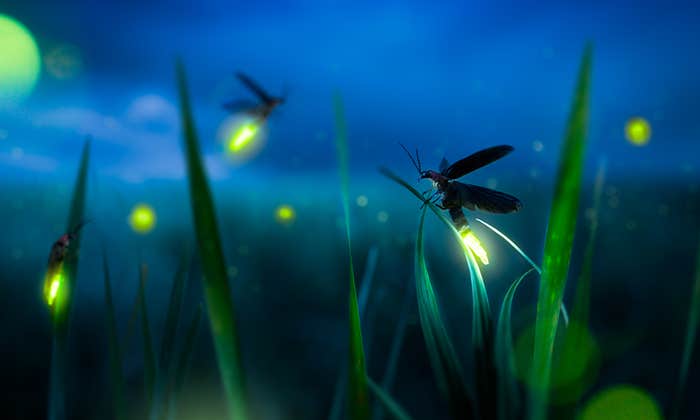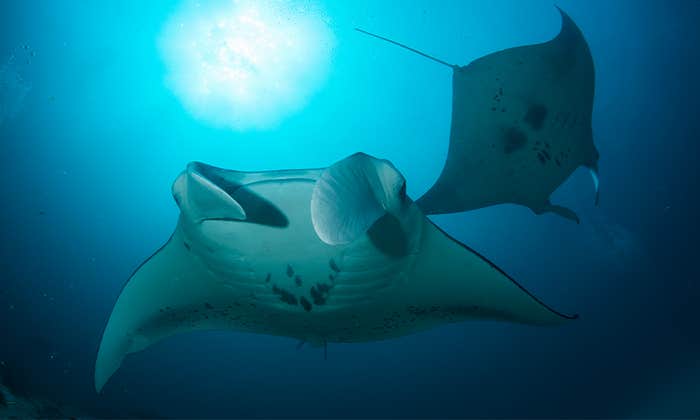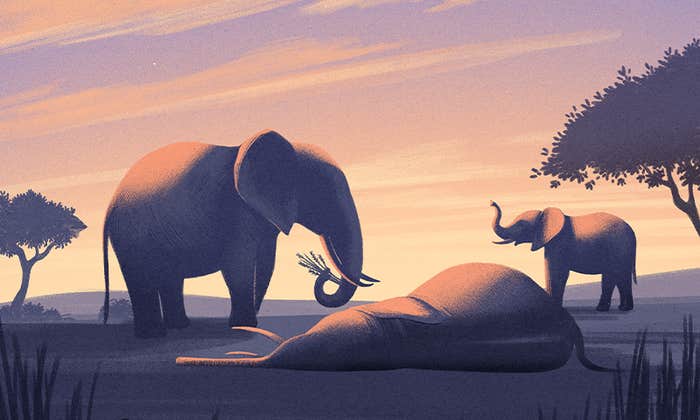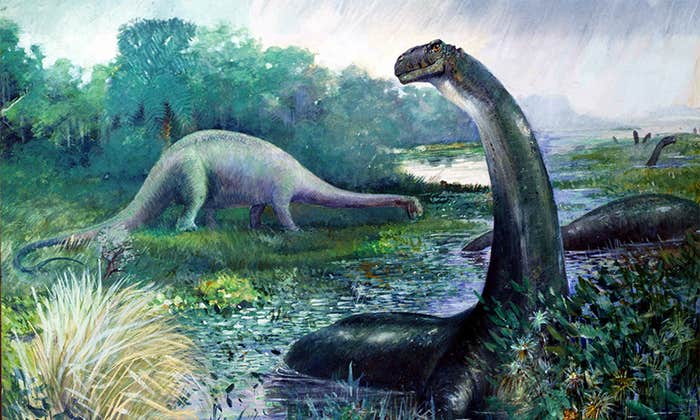In the late 1600s, self-made scientist Antonie van Leeuwenhoek embarked on a project that would make him question the very nature of life and its limit. And would send ripples of philosophical and scientific quandaries through the generations that persist today. Peering through the hand-ground lenses he crafted, magnifying his subjects 275 times, the Dutch cloth merchant and naturalist was the first human to glimpse an otherworldly microcosmos where astonishing creatures seemed to defy the laws of nature and survival. He called them, adoringly, “animalcules.”
In 1687, he discovered some animalcules so peculiar in form and function that he would spend decades observing them. We now know these tiny animals, which had wheel-like appendages that van Leeuwenhoek correctly surmised were for feeding, as rotifers. They live in watery environments throughout the globe, from the tropics to Antarctica, in oceans, temporary puddles, and even in moisture within moss. But van Leeuwenhoek wasn’t satisfied just watching them. He decided to test these ubiquitous animals’ limits. He wanted to see what would happen to them when their surrounding aqueous environment dried up.
Other animalcules, he noted, would readily break apart or collapse in on themselves upon desiccation. But when he dried out rotifers, they each instead contracted into a shrunken, wrinkled oval, now called a “tun” or “xerosome.”
Philosophers are still grappling with the idea that life and death may not be the only states of being.
What van Leeuwenhoek discovered next went beyond anything he could have imagined: After adding water to a glass tube that contained dried sediment and rotifer tuns he’d collected from a rain gutter, van Leeuwenhoek watched in wonder through his homemade microscope as rotifers came back to life. “I examined it, and perceived some of the Animalcules lying closely heaped together,” he wrote in a letter to the British Royal Society. “In a short time afterwards they began to extend their bodies, and in half an hour at least a hundred of them were swimming about the glass …” As a good experimentalist, he repeated the process by drying out other rotifers and witnessing the same phenomenon numerous times—even after samples were desiccated for a month.
“These little animals, which had appeared to be completely dried and lifeless, were restored to motion upon the addition of water, as if they had never suffered any harm,” van Leeuwenhoek wrote. Microbiologists would later find that some species of rotifers are able to reanimate after up to nine years of desiccation.
According to University of California, Davis philosophy professor Cody Gilmore, van Leeuwenhoek’s observations presented a philosophical paradox beyond the biological questions they raised concerning desiccation and survival. Consider those newly identified rotifers in van Leeuwenhoek’s dried gutter sediment that apparently came back to life. The tuns, as far as the progenitor of microbiology could tell, showed no signs of living—no movement or activity or perceptible change for days, potentially weeks. Were the animals technically dead? Were they, in tun form, actually still alive but dormant, like a mammal in hibernation? Or were they in some kind of liminal, in-between state? An underlying assumption held by most people, including biologists and philosophers today, is that organisms are either alive or dead. Gilmore notes that the paradox lies in maintaining the possibility of such a binary proposition in the face of rotifers and other extremophiles that seem to occupy such a third state as they await reanimation.

Van Leeuwenhoek wrote that his rotifers “came back to life,” but he never hinted at whether he thought they were resurrected or if they had remained alive, apparently failing to fully realize—or being unwilling to confront—the philosophical quandary raised by his discovery. Despite acceptance from the Royal Society, his observations also failed to gain notice by his contemporaries and were shelved for years. Without a powerful enough “van Leeuwenhoek microscope” or accurate scales to precisely measure desiccation, naturalists of the day could neither replicate his observations nor dive into their implications. In fact, many of van Leeuwenhoek’s early observations were often met with skepticism. Forget about tiny, resurrecting bugs. A microcosmos of bizarre lifeforms, unseeable with the naked eye, sounded to most of his contemporaries more like fiction than reality.
Even as microbiologists have been working for centuries now to piece together how rotifers and several other animal species survive desiccation and other extreme conditions, philosophers are still grappling with the idea that life and death may not be the only states of being in which organisms can exist.
Since van Leeuwenhoek’s seminal observations, subsequent biologists have found other microscopic beings that could similarly survive desiccation. One of these is the microscopic “eelworm” (now known as the larval stage of the pathogenic roundworm, Anguillulina tritici), which live in diseased grain. They can be dehydrated to the point where they crumble into powder. But, when left intact, these thoroughly dried animals can revive and squirm around upon rehydration.
After confirming this mysterious eelworm resurrection and observing rotifers reanimate, British naturalist Henry Baker alighted upon their seemingly supernatural quality, writing, in his 1764 guide, Employment for the Microscope, “What Life really is, seems as much too subtle for our Understanding to conceive or define, as for our senses to discern and examine.”
In the 1770s, Italian biologist Lazzaro Spallanzani burrowed even deeper into the philosophical ramifications of this physiological phenomenon, which by then scientists had learned also included tardigrades, microscopic “water bears” (tiny animals that researchers have since discovered can survive not only desiccation but also radiation, extreme temperatures, and even the vacuum of outer space). Spallanzani wrote, in his “Observations and Experiments Upon Some Singular Animals which may be Killed and Revived,” “an animal, which revives after death, and which within certain limits, revives as often as we please, is a phenomenon, as incredible as it seems improbable and paradoxical. It confounds the most accepted ideas of animality; it creates new ideas, and becomes an object no less interesting to the researches of the naturalist than to the speculation of the profound metaphysician.”
Although they weren’t expressed outright, the tricky, big questions were now apparent. In their dormant state, were creatures such as rotifers, some worm larvae, and tardigrades alive or dead? When reanimated, were they resurrected from death? At the time, fear of excommunication or condemnation by the Roman Catholic Church for publishing scientific observations that challenged Church doctrine impacted communication about new scientific findings.
But science marched on. In the 19th century, the French zoologist Louis Doyère, who was among the first to study tardigrades, developed and improved desiccation methods by bringing precise temperature measurements and vacuum chambers that eliminated moisture into the experimental mix. Still, leading naturalists remained skeptical as to whether rotifers, eelworms, and tardigrades were fully desiccated and whether or not they ceased physiological activities entirely. At that time metabolism was only an emerging concept, so life was defined more by visible criteria like reproduction, self-initiated movement, and growth.
About 10 percent of rotifers’ genome isn’t even animal.
With a few exceptions, further investigation into the life-and-death question raised by van Leeuwenhoek’s rotifers stagnated like a tun for about the next century. It wasn’t until the mid 20th century that David Keilin, a Russian-born, British biologist, set the stage for contemporary research into extremophiles by articulating the need for scientifically understanding their ability to survive desiccation.
Keilin himself suffered from asthma and was intrigued by the mechanisms that enable respiration. His greatest scientific contribution was his discovery of cytochromes, enzymes crucial for cellular respiration. He was fascinated by animals with the ability to suspend respiratory processes. In 1959 he wrote, in painstaking detail, the entire scientific history of rotifer desiccation survival, from van Leeuwenhoek’s initial experiments with gutter sediment onward. Although the paper did not include new data or observations, Keilin revolutionized understanding of the enigmatic process in this single work. Rather than viewing desiccation survival as a philosophical curiosity, he showed that, death or life aside, it’s an extreme form of physiological dormancy worth studying on a basic, biological level.
He defined rotifers’ dehydrated form as “cryptobiosis”—“A state in which no visible signs of life are present, and metabolic activity is either temporarily absent or so reduced as to be undetectable.” By using the term “undetectable,” he transcended previous nitpicking over whether the creatures had completely dried out or had suspended life’s activities. Instead he turned the spotlight toward describing the specific mechanisms that allowed such organisms to survive a state of unmeasurable activity.
In essence, Keilin set the stage for revealing the “how” of it all. It was a challenge motivated partially by space exploration, because scientists were beginning to consider that desiccated extremophiles might possibly exist on other planets. In the 1970s, researchers discovered accumulations of a sugar molecule called trehalose in other desiccation-tolerant animals, such as brine shrimp and nematodes. These organisms could replace water molecules in cells with this compound and prevent their membrane from breaking or collapsing upon desiccation. Trehalose forms a glass-like matrix that fortifies cellular structure, maintaining it during dehydration. Upon the return of water, the sugar molecules simply dissolve and cellular activity returns.
But there was a wrinkle: Rotifers didn’t seem to use the trehalose trick. Researchers working in the mid-2000s discovered that instead of relying on sugars to form a protective matrix in their cells, these animals produce proteins to replace the water in their cells. The molecules, known as late embryogenesis abundant (LEA) proteins, were originally discovered in plants, which use them to protect seeds from drying out. Essentially, LEA proteins create stability in cell membranes which might otherwise break down during desiccation. The proteins, which are scattered throughout the membranes of rotifer cells, act as a shield. As the cells dry out and their contents physically shrink and fold over, LEA proteins assure that the membranes don’t break. When water returns, everything expands and unfolds back into its original form.
This doesn’t mean that rehydrated rotifers rejoin the living unscathed. During desiccation they undergo considerable chromosomal breakage. Some regions of their DNA are shattered. But when water returns, potentially after years, the organisms are still able to begin moving again within about five to 10 minutes. Within about half an hour, they will have restructured their DNA as it was. To achieve their apparent resurrection, rotifers rely heavily on advanced DNA repair mechanisms.
The process of desiccation and repair keeps their DNA in a relatively fragile, yet flexible state. Such resilience in turn sets the stage for a number of mysterious genetic anomalies that are likely connected to their extremophilic capabilities.
The simple dichotomy of alive or dead doesn’t make sense.
Rotifers are known as “evolutionary scandals.” About 10 percent of their genome isn’t even animal. They appear to have taken on DNA from yeast, fungi, and plants and incorporated it as their own. Genetically, their ability to survive desiccation derives largely from these other organisms. Researchers have identified the non-animal genes rotifers have co-opted as the very genes that enable desiccation survival.
Their advanced DNA repair mechanisms and their ability to incorporate foreign DNA are both extraordinary and seem unlikely to be coincidental. But which came first? Diego Fontaneto, a biologist at the Water Research Institute in Verbania, Italy, explains that rotifers could have originally adopted foreign DNA through the process of desiccation and recovery. “If this is true, how could they use the bacterial DNA for surviving desiccation?” he asks. “It becomes an issue of what came first—the chicken or the egg.”
One thing we do know however, is that when the rotifers are dried out, their physiological activity indeed comes to a halt. There is no detectable trace of life in a tun, whatsoever. Fontaneto offers two literary analogies to which researchers have turned to over the years to try to understand rotifers’ strange feats. Are they more like Oscar Wilde’s Dorian Gray, whose portrait ages while he appears to remain young, only to have his true, older form revealed upon the destruction of the painting? That is, do rotifers age while they are dehydrated, revealing a degraded form upon reanimating? Or are they more like “sleeping beauties” whose aging pauses during stasis?
It might be neither. Upon rehydration, rotifers can actually appear even younger than they were before they entered stasis, Fontaneto explains. Reanimated rotifers tend to live longer while active and to produce more offspring than rotifers that have not desiccated, despite having lived the same amount of time in water. “It seems they really need to desiccate,” Fontaneto suggests. “For them it’s not a stress. It’s so beneficial, they really can’t live without desiccation.”
Although biologists now understand some of the mechanics underlying rotifer desiccation and survival, the philosophical debate over whether or not they die remains unsettled. Despite Keilin’s clever workaround that motivated researchers to stick to the science of their survival, we appear to be back where we started.
For Gilmore, the presence of metabolic activity is not completely synonymous with life. “So there’s a pretty strong case that there’s no metabolism” in a tun, he says. “Then the question is still not answered as to the status of the organism. Is it alive? Is it dead? The answer to the question about metabolism doesn’t provide a direct answer about biological status.”
According to Gilmore, even though there’s a solid argument rotifer tuns show no detectable sign of living—metabolism, respiration, digestion, etc.—there’s an equally strong argument that they are not dead because as soon as water returns, they become active. There must, he suggests, instead be fault in the model that all things are either alive or dead. He calls this “exhaustivism,” simply because it exhausts other possibilities.
Gilmore explains that the simple dichotomy of alive or dead doesn’t make sense. “It’s just that to be dead is partly a historical property and it requires having died and having died requires having been alive—or at least cryptobiotic,” he says. “So there are lots of things that are not alive and not dead, and they’re not dead because they were never alive—a toothbrush, a rock, a toaster.” Rather, Gilmore and others posit that cryptobiosis is a unique state of being.
Thomas Lemke, a professor of sociology at Goethe University Frankfurt in Germany, has a slightly different framework for what state van Leeuwenhoek’s dried rotifers were in. Lemke suggests moving past the term cryptobiosis because, in strict Greek translation, it implies the existence of some hidden, or latent form of life. Rotifers and other animals that enter cryptobiosis don’t have any kind of hidden capacity, he argues.
Lemke prefers the concept of suspended life, what he terms “limbiosis,” derived from the Latin limbus, meaning edge or border. It offers connections to other elements. He explains that if you are suspended, you are suspended between other things. A suspension bridge for example suspends one between shores. Such a state might hinge on, “What is going on not what might go on in the future—the potential,” he says.
Rotifers will continue to make the case for a fully fledged third state of being, even if it maintains a connection between the two main states of alive and dead. Van Leeuwenhoek’s original observations of their strange microscopic world sounded like fantasy to other naturalists at the time, influencing his staunch empirical approach to science and his advocacy of visible evidence for phenomena over philosophical reasoning. What surprise he might have had if he found out that his strange observations of reviving animacules had laid the groundwork for a philosophical debate enduring centuries. ![]()






























